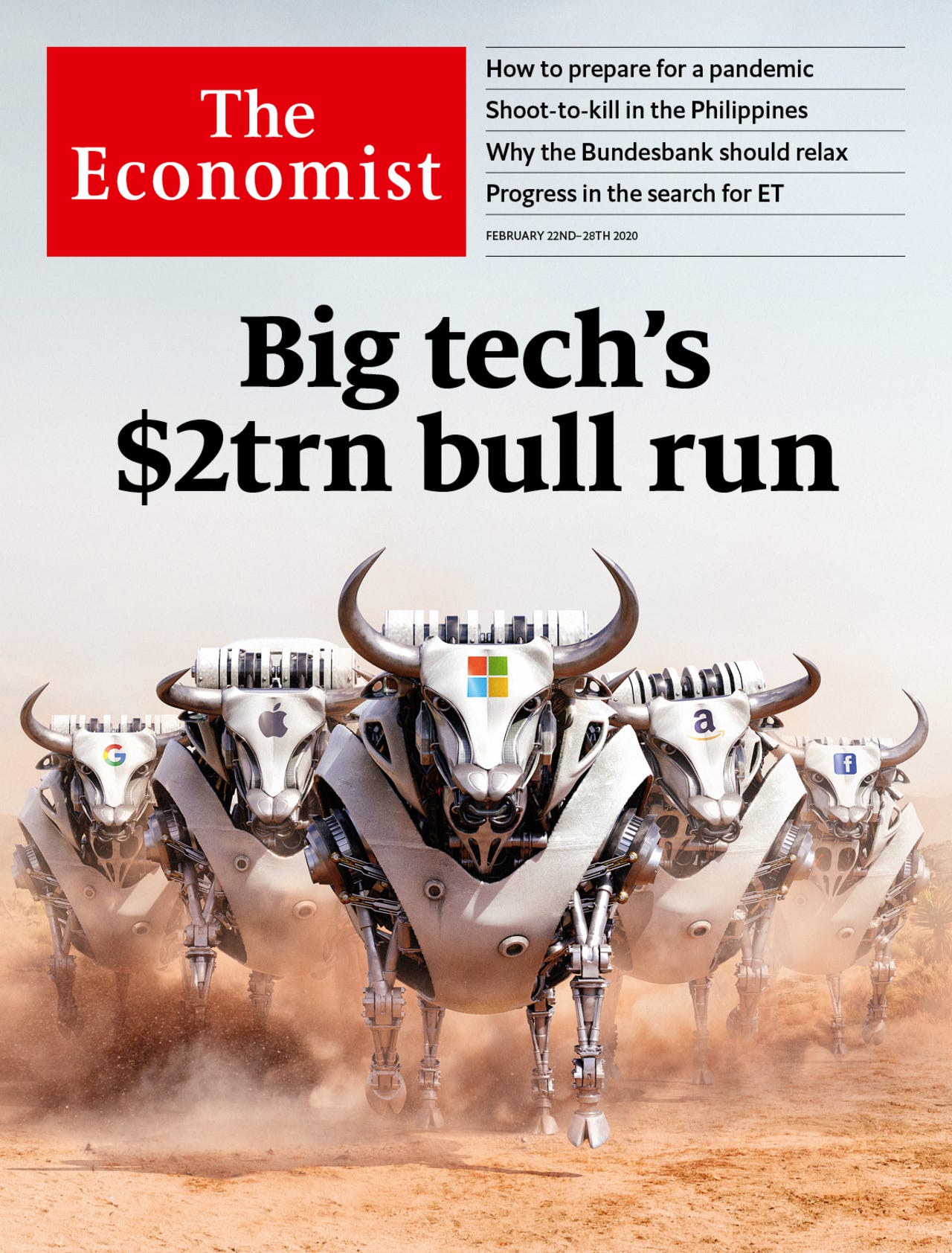This first appeared on Medium
Since February 21st, 2020, stock markets have plunged over 30%. To most people, it came as a shock as equities had been on a tear over the last six months.
However, for anyone who’s been following the macro picture behind the scenes, the crash came as no surprise. Worldwide, economic indicators kept on deteriorating, liquidity kept on tightening, and Coronavirus fears kept on building. All the usual market-topping indicators were screaming “sell, sell, sell,” still, global stock markets kept on rising.
To call the very top of this bull market, mainstream sentiment had to reach peak euphoria: where people did things and said things that were totally nuts. For skeptical investors who wanted to save themselves from a world of pain, these things — though unconventional — acted as leading indicators: clear signals that markets were about to take a turn for the worst.
Experts Say There’s Almost No Chance of Recession
You can’t get more market-toppy than experts predicting almost a zero percent chance of recession going into 2020. StockCats, a popular market satirist, found these excellent howlers.
Global Officials: “Everything Is Under Control”
In 2001 it was tech company valuations, in 2008 it was Subprime loans, and in 2020 it was COVID-19.
China said they had contained the Coronavirus, and that global pandemic risk was still low. Larry Kudlow, Director of the United States National Economic Council, said on television that the U.S government “contained” the virus: “Pretty close to airtight.”
But just like internet companies during the tech bubble and like risky mortgages during the subprime bubble, the catalyst behind the crash was anything but contained: The number of cases in China had skyrocketed and the virus had spread globally.
CEOs Taking Profits
While the stock market continued to boom, CEOs ran for the exit door, providing investors with the ultimate “get the hell out” indicator.
In January 2020, a record number of executives knew the phony economy was about to implode along with their company’s stock price. As corporate cashflows evaporated, they were unable to finance stock buybacks: the main driver of equity markets over the past decade.
Meanwhile, stock markets had reached all-time highs, so now was a good time for CEOs to jump ship and take profits.

Presidential Bragging
Unfortunately for Trump, printing trillions of dollars into existence fails to boost stock markets over the long term. Of course, he knew the economy would collapse eventually, but he failed to foresee the bubble bursting on his watch.
Ironically, the only Presidential candidate this century to criticize our phony economic system is the one to grant its death wish. Trump is working hand-in-hand with the Fed to implement QE infinity: a last-ditch attempt to inflate the bubble before the whole debt-fueled Ponzi scheme comes crashing down.
It got worse for Trump as markets began to plunge right after he started bragging about stock market gains on Twitter.
Euphoric Front Covers
Perhaps the only indicator with a 100% success rate is when media companies use their front covers to go maximum bullish on equities. The Economist published its “$2 trillion big-tech bull run” in the midst of the stock market crash.


Extreme Bullishness
If there’s anything you will learn from the market crash, it’s the rapid change in market sentiment. As Keith McCullough from Hedgeye — who successfully predicted the crash — says, “risk happens slowly then all at once.”
In less than a month, we went from extreme greed to extreme fear. The only scary thing here, however, is investors were at max greed — buying overvalued FANG stocks and risky high yield credit — as the WHO was declaring the Coronavirus: “a global pandemic.”
“Cash Is Trash”
Most investors agree that Ray Dalio is a smart guy, but sometimes, even smart guys get it wrong. His hedge fund, Bridgewater Associates, was overweight high-beta stocks during the crash, resulting in a 20% loss in February alone.
Weeks before at Davos 2020, Dalio said publicly that, “cash is trash,” but judging by the aftermath, it’s something that will haunt him for the rest of his investing career. This is a lesson for us all: When even the most intelligent investors fall for the fake optimism and believe stocks will rise indefinitely, you know the market is overdue for a correction.
Quotes from Federal Reserve Chairmen That Sound Like Famous Last Words
Everyone remembers the famous quote from former Fed Chairman, Ben Bernanke, who, just before the subprime collapse, stated, “Subprime is contained,” and from Bernanke’s predecessor, Janet Yellen, who said, “We’ll never see another recession in my lifetime.”
This time, it was the turn of recently appointed head honcho, Jerome Powell, to provide us with a market-topper: “Short-term interest rates are under control.” Low and behold, a month later, repo market chaos leaked into the stock market and trillions of dollars of wealth disappeared in a matter of minutes during the sharpest stock market crash on record.
Jim Cramer Can’t Find Any Sellers
When the biggest stock market bull in the game gets bearish vocally on Twitter, you know something serious is about to go down. After Cramer tweeted, the S&P500 proceeded to fall over 30%. Let that sink in.
The views represented in this commentary are those of its author and do not reflect the opinion of Traders Magazine, Markets Media Group or its staff. Traders Magazine welcomes reader feedback on this column and on all issues relevant to the institutional trading community.



